Rooted In Place: Texas Winemakers are Redefining the Taste of Texas
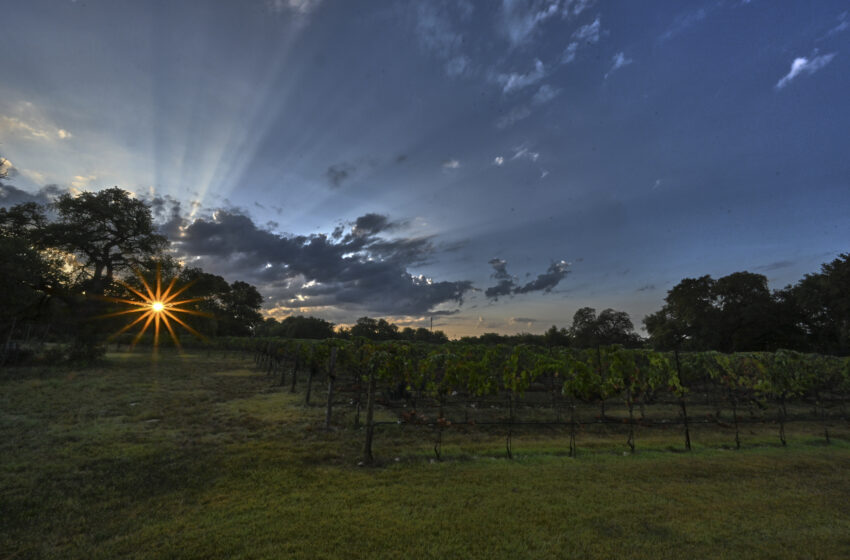
No discussion about the business of feeding the Lone Star State would be complete without consideration of how we quench our Texas-sized thirsts.
It’s doggone hot here. We love our iced tea, our Waco-born Dr Pepper, refreshing margaritas, and tall, frosty beers. (You may need to throw a nod to Austin-born Tito’s vodka, too.) But one drink category currently growing faster than a tumbleweed in a hurricane is one not usually associated with Texas.
Wine. Good wine. World-class, award-winning wine, in fact.
Sure, many understand and enjoy Cabs from California, Pinots from Oregon, or Champagnes from France. But have you tried Tempranillos or Tannats from Texas? Viogniers? Mourvedres? If your answer is no, Texas winemakers want you to understand, you are missing out on something special. Today’s Texas wines are not the wines you may have tried years ago.
A LITTLE BACKGROUND
Fifteen native grape species grow wild in Texas. That’s more than anywhere in the world, but it wasn’t until Spanish missionaries planted grape vines from Mexico near what is now El Paso that Texas had its first vineyard. That was around 1650, 100 years before grape vines were planted in California.
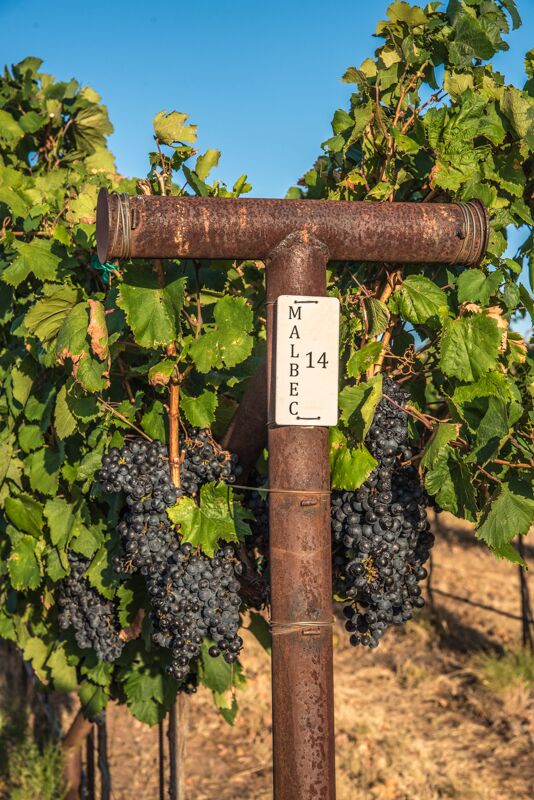
Fast-forward to the repeal of Prohibition in 1933, and it still took decades for the wine industry to gain any sizeable roots in the Lone Star State. Dry counties remained a challenge for legitimate alcohol businesses. Nonetheless, in 1971, Dr. Bobby Smith planted a vineyard, and the state’s first winery since Prohibition was born, Llano Estacado outside Lubbock.
Smith and a small group of other early wine enthusiasts were instrumental in influencing Texas legislators to pass the Texas Farm Winery Act of 1977. It allowed grape growers to produce wine in a dry county as long as they only distributed it in an area where alcohol sales were legal.
Attorney Ed Auler and his wife Susan were among that early group. Called by some the “first family of Texas wine,” they are the owners of Texas winery permit number three, having founded their Fall Creek Vineyard in 1975 following a fortuitous trip to France. They took the trip to learn whether French breeds of cattle might be more profitable on the family’s fourth-generation ranch, but Susan suggested a driving tour of the country’s wine regions while they were there.
“We just became infatuated with the wines and foods and culture of France,” Susan says. “But we noticed, as we were driving from Rhone across the South of France through Provence to Bordeaux that there were geographical similarities. We said, ‘It looks a lot like the Hill Country. I wonder if anybody’s thought about growing grapes in Texas?’ ”
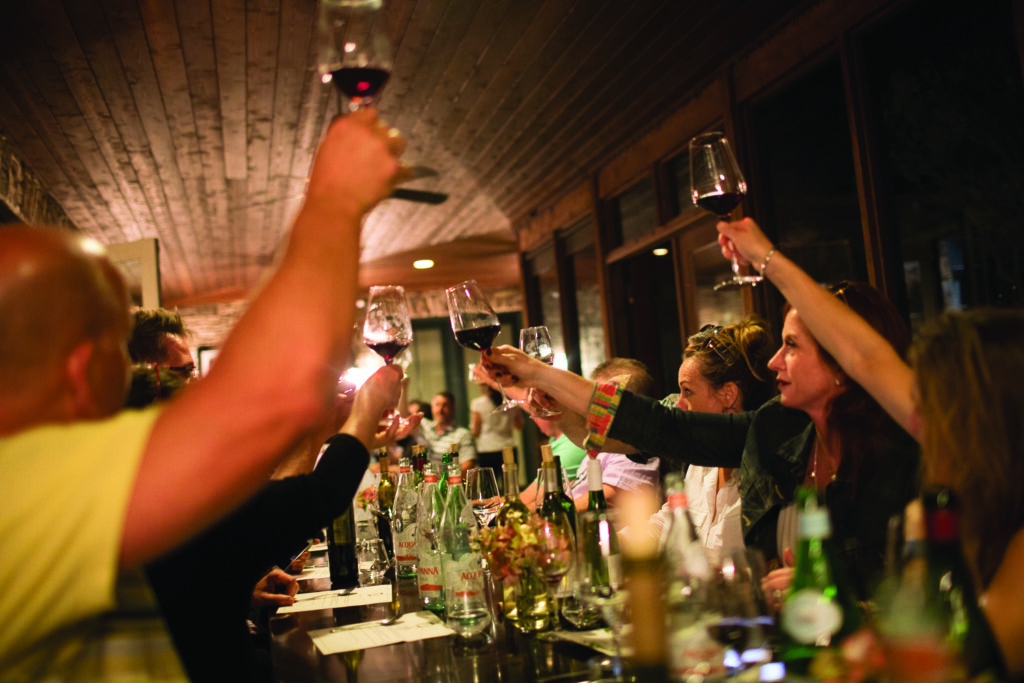
“We were the first in the Hill Country,” Susan says. “Llano Estacado was on the high plains. We had a lot of collaboration from the very beginning because it’s lonely out there when there’s only two or three of you.”
A GROWING INDUSTRY
It wasn’t until the 1980s that Texas wines began to win positive national recognition. Wine & Spirits Buying Guide listed Fall Creek’s 1982 Chenin Blanc atop its list of all Chenin Blancs in America. Llano Estacado’s 1984 Chardonnay won a double gold medal at the San Francisco Fair and Exposition’s National Wine Competition, which was an enormous feat for any winery and an unprecedented win for Texas’ wine reputation. Then, the following year at the Atlanta International Wine Festival, Messina Hof Winery’s 1986 Chenin Blanc received a gold medal, one of only 45 awarded to wineries nationwide.
Skeptics began to take notice. George Fuermann’s popular Wine Talk column, which appeared in the Houston Post from 1984 to 1995 told the story of Karen MacNeil, a New York wine consultant who was tapped to judge a Texas wine competition. When she was asked her opinion of Texas wines, she responded, “I was prepared for sagebrush juice but was bowled over by the quality of Texas wines.”
GETTING TEXANS INTERESTED
Getting buy-in from inside the state wasn’t easy though. From 1982, the first year Texas wine data exists, through 1995, Texas wine represented less than two percent of the wine consumed in the state. Regardless, the total volume of wine being produced increased exponentially during that time, from 50,000 gallons in 1982 to 750,000 gallons in 1986. Additionally, Texas wineries grew from one in 1975 to 20 by 1986. By 1993, Texas wine sales had doubled, and the number of wineries continued to expand.
Then, in 2001, a new law went into effect that helped Texas winemakers dramatically improve their profits. Susan Combs, then-commissioner of the Texas Department of Agriculture, was instrumental in its passage. The law allowed wineries in dry counties to sell wine in their tasting rooms and to ship wine to or from dry or wet counties. Naturally, that led to more tasting rooms, more wine clubs, more wine shipments, many more Texans taking a taste.
Blake DeBerry, president of Texas Wine Growers and co-owner of Torr Na Lochs Vineyard and Winery in Burnet, says one of the industry’s early mistakes affecting Texas wine’s reputation and sales was that “we were trying to be California.”
DeBerry, his co-owner and wife Karen, and other winemakers like Chris Brundrett of William Chris Vineyards agree: Today’s winemakers have learned from mistakes of the past.
“I think the wine 10, 15, 20 years ago did put a bad taste in a lot of people’s mouths, and what’s sad is most of it wasn’t even from Texas; it was just bottled in Texas,” Brundrett says.
ENTERTAINING TOURISTS
The Texas Department of Agriculture breaks out the state’s grape growing regions into five key areas, all dry and sunny, growing varietals often compared to the wines of Portugal.
Within those, the federal government has designated eight American Viticultural Areas (AVA). AVAs are regions with specific, distinct geographical or climactic features that affect how grapes are grown. Almost 80 percent of the state’s grapes (more than 75 different grape varieties) are grown in the 3,000-plus-acre High Plains AVA surrounding Lubbock. That’s thanks to the area’s higher elevation, mineral rich soil, and cooler evenings.
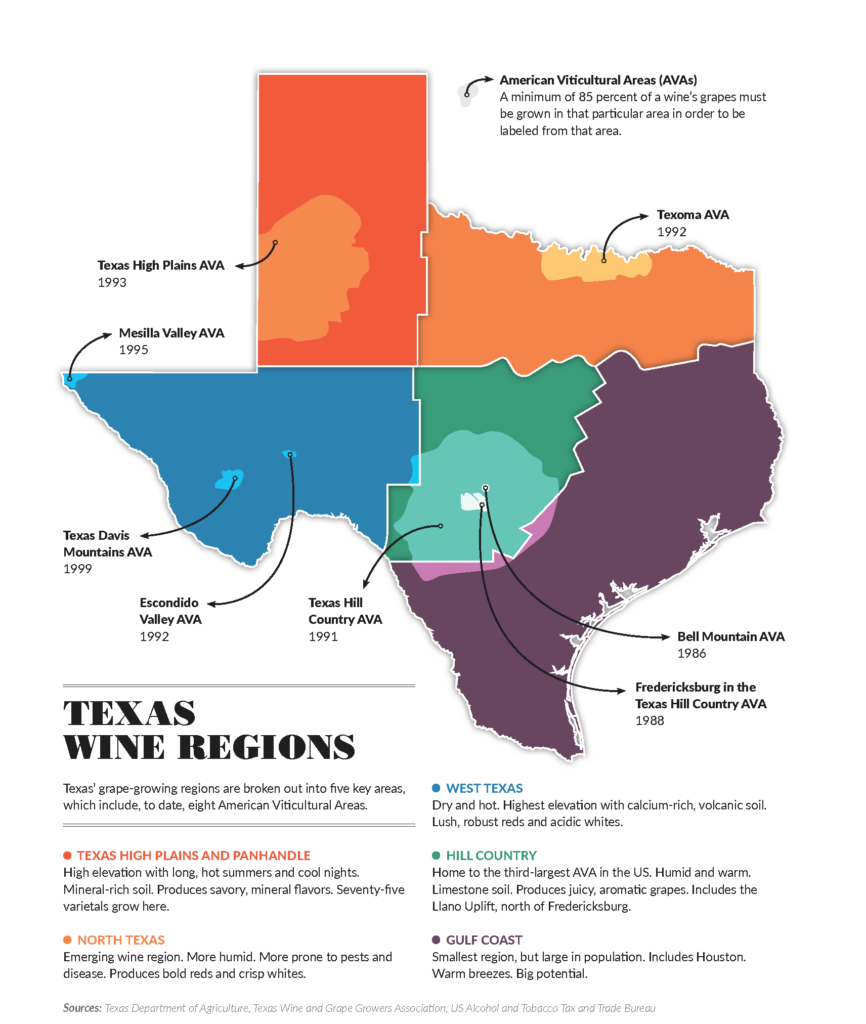
By contrast, the much larger Hill Country AVA (third largest in the country, forming a rough triangle between Austin, Fredericksburg, and San Antonio) accounts for only 18 percent of the state’s grape production, but it provides almost all the wine tourism. More simply stated, if the High Plains is the workhorse, the Hill Country is the show pony.
With upscale tasting rooms, beautiful vineyards, live music, lovely food, and barrels full of Texas hospitality, the Hill Country, specifically Fredericksburg, has helped the Texas wine industry become a major contributor to growth in state tourism, generating more than two million tourist visits each year and almost $690 million in annual tourism spending. Travel and Leisure named the Texas Hill Country one of the 50 best places to travel in 2021, largely because of its ample winery-related activity options. Texas now boasts 17 wine trails and more than 490 wineries.
The Texas Almanac says, “The wine business in Texas is as much about tourism as it is about the grapes on the vine or the wine in the bottle.” Winemakers may disagree with the second part of that sentiment, but they do agree they rely heavily on tourists for support.
Winemaking is really a hospitality industry, says Glena Yates, president of the Texas Wine and Grape Growers Association (TWGGA) and owner of Spicewood Vineyards and Ron Yates Wines.
“If you go to a tasting room and just sit and talk to people, people love it,” Yates says. “They love going out. They love the experience. And when they walk in the door, you want them to feel like they’re at home.”
THE CHALLENGES
Yates, like other winemakers, is ecstatic to discuss the exponential growth and the improvement of the Texas wine industry, and like others, she is also quick to point out, winemaking is a serious and challenging business.
“Everybody thinks it’s a very romantic business to be in the wine business. They don’t realize quite how much work it is until they get into it,” Yates says.
DeBerry agrees. “You don’t do this if you don’t have a passion for wine,” he says. “You have to have a passion for the process. When you’re sitting there drinking wine and doing a wine tasting and looking at the view, it’s very romantic, and people say, ‘Oh, you’re living my dream.’ I never discourage anybody, but I just tell them, it’s a business. Like any other business, it has its challenges, and it’s a lot of work.”
Winemaking is expensive and risky. It usually takes years to develop strong enough vines to produce good wine. Many wineries close as a result. And of course, growing grapes requires farming—no easy task in gritty, hot Texas, where drought, unexpected hailstorms, and occasional freezes come calling.
“The weather,” Susan Auler says. “That’s the number one challenge. When you get hail or you get devastating freezes, I mean, it cuts your crop back. That hurts. I don’t care if you’re in Mendoza, in South America, or if you’re in Bordeaux, France, or if you’re in the Rioja. It’s all about the site and the soil. We all suffer from the same thing; heat spikes or rain at the wrong time or a hailstorm, those are the things that are problematic for growing grapes.”
This year, winemakers statewide report anywhere from a 30- to 50-percent loss in their harvest, largely due to Mother Nature, but also, they say, largely due to another challenge, the use of the herbicide Dicamba on cotton farms located near vineyards in the High Plains. Dicamba is used to control weeds in cotton fields, but grape growers say it is drifting over onto their vineyards, crippling sensitive vines. The matter is currently being litigated between the makers of Dicamba and the owners of 57 vineyards who filed suit against them last year seeking $560 million in damages.
Meanwhile, TWGGA and other industry leaders are doing what they can to help find a solution they admit won’t be easy.
“We had a meeting this past week with the producer of Dicamba and some of our grape growers and also the cotton growers and nothing came out of it,” Yates says. “Other than everybody walked away understanding everybody’s position. If a farmer is spraying his cotton and the wind is blowing, it can go several miles from where he’s spraying. And he’s doing everything he’s supposed to do. But the problem is the volatilization of the product. We don’t know where it’ll end up, but we’re working with our growers trying to help them solve this problem.”
It will be an important one to solve because the state’s wine industry now faces a Texas-typical problem: astounding growth. There just aren’t enough grapes to meet the demand.
THE GOOD NEWS
Though this year’s grape harvest is significantly smaller, there is some good news for oenophiles (a fancy name for wine lovers). Winemakers say the resulting wine, though harder to find, will burst with flavor.
“The grapes we do have are going to be fabulous, because they’re very concentrated,” Yates says. “The vine has the ability to give flavor to a number of grapes. When you lower the count of grapes, then the ones that are there get a whole lot more flavor.
DeBerry notes the same. “The fruit’s very concentrated, smaller berries, same number of clusters, but smaller berries, so lower count, which means less wine, but it also means more skin contacts, so it’s going to be a little more tannic. It’s going to extract a little more color. So, from that standpoint, I can’t argue. I’m never going to argue about what we get from the vineyard. God gave it to us, so we’re just going to do our best to make the best wine out of it we can.”
A CEO & WINEMAKER
Texas native Chris Brundrett is described by some as the driving force behind the growth of the state’s modern wine industry. At 21, much to the dismay of his parents, he dropped out of school in New York and started classes at Texas A&M University, not sure what he wanted to do until, one weekend, he took his girlfriend to a winery because “somebody told me there was wine in the Hill Country.”
Brundrett came back to A&M the following Monday and changed his major to horticulture with an emphasis on viticulture and oenology and never looked back.
“My dad just called me a dumbass, and was like, ‘You just want to make booze for a living,’ ” Brundrett says. “But I thought, ‘There’s something really cool going on here, and I don’t want to miss it.’ And so I stayed in Texas and made wine and grew grapes for several different people until I met my business partner, Bill Blackmon.”
Brundrett and Blackmon were frustrated about the status of the industry. “There wasn’t an emphasis on the vineyards or terroir or beautiful winemaking,” Brundrett says.
So, Brundrett and Blackmon both quit their winemaking jobs, and with $40,000 on an American Express card, they started William Chris Vineyards in Hye, Texas, in 2008. They built it on the philosophy that great wines are not made but grown in the vineyard.
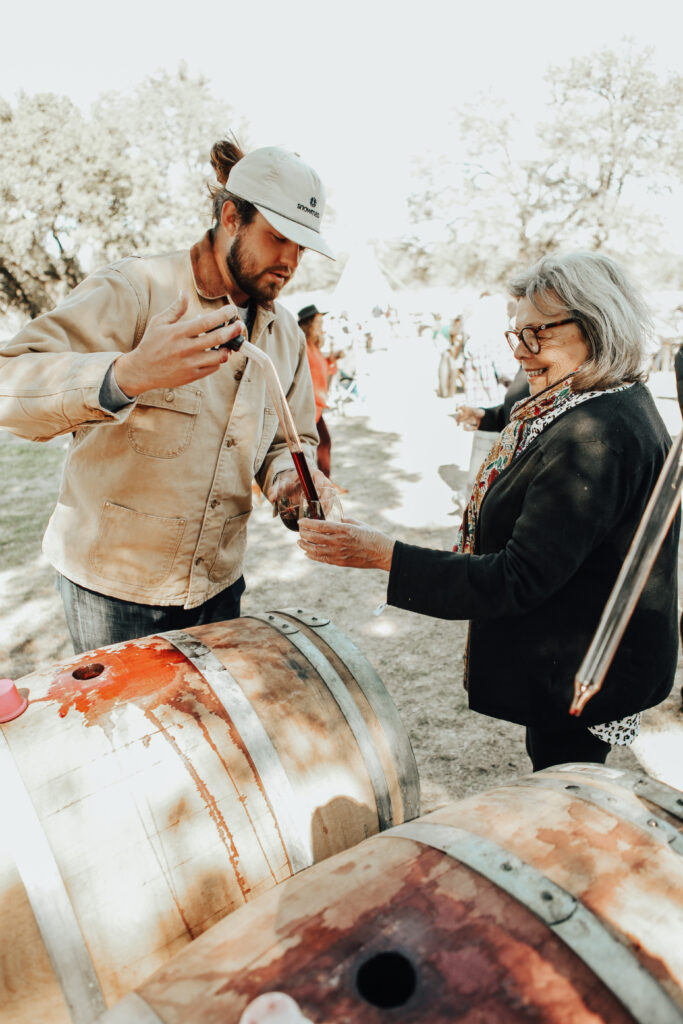
The company made 400 cases that year, and they have grown exponentially every year since. Today, a family of five brands, William Chris Wine Company produces about 65,000 cases a year, ships mostly direct to consumers in 44 different states, and employs 134 people. It is also the largest producer of 100 percent Texas-grown wine, a passion Brundrett unapologetically champions.
As the first Texas winemaker to be featured in Wine Enthusiast’s 40 Under 40 list, Brundrett helped formed Texas Wine Growers, a nonprofit organization “dedicated to promoting and protecting the integrity of Texas wine by making wines solely from grapes grown in the terroir of Texas.”
Terroir is the character a wine gets from the particular place where the grapes were grown to make it—how soil, topography, and climate affect the taste of the wine. Brundrett says no ingredient is more important in wine than location. In fact, he says, 80 percent of the resulting wine’s taste happens in the vineyard.
“So much of the soulfulness is cultivated throughout the vintage and the previous vintages too … of all the work up to this point to have the vineyard as healthy as possible.”
TEXAS ONLY
Brundrett believes the only way to elevate the credibility of Texas wine and to become a world-class wine region is to define for the world what it means (and tastes like) to drink wine made with 100 percent Texas-terroir. To that end, he and other like-minded winemakers were instrumental in the 2021 passage of a labeling law, requiring any wine label using a Texas county, AVA, or vineyard designation to follow stringent rules, the bottom line being, they all must contain 100 percent Texas grapes. This is in keeping with wine regions like California or Oregon.
Before that, consumers may not have realized the wine they were drinking was not really a full-fledged Texan.
Brundrett says some large winemaking companies fought hard against that standard because their business models were based on blending finished wine from out of state with their wine to make more money. That practice takes away from the terroir of the state, he says, and is a short-term fix to a long-term opportunity.
But Yates says there are two sides to that argument.
“We’d all love to use nothing but 100 percent Texas wines. But right now, we just don’t have the ability to do it because we don’t have enough grapes being grown,” she says. “We have six or seven huge, gigantic wineries in Texas that buy up all the grapes they can buy up. It doesn’t leave a lot for the others. They have to get their grapes somewhere else.”
RESEARCH & HEAT SHOCK GENES
One issue that unites Texas winemakers is the need for more state funding for grape research. Susan Auler is leading an effort to launch the Texas Grape and Wine Institute, a collaborative partnership between the University of Texas at Austin, Texas A&M University, and Texas Tech University to enhance the economic development and growth of Texas wine by fostering research, education, and entrepreneurship. In addition, TWGGA is currently leading a legislative effort, the Texas Wine and Grape Initiative, to get money appropriated in the state budget dedicated to the continued growth and improvement of the state’s wine industry.
“We need research to elevate the quality of all wines grown in Texas and to gain more awareness in the United States and worldwide, because we have wines that certainly compete on the world stage,” Auler says.
Brundrett is more direct. “Virginia is kicking our butts in state funds, to say the least. And so is Oregon, Washington, New York. Texas lags way behind, even though we have a much higher economic impact than most any state. I mean, not California, but we have a huge economic impact and the amount of dollars our state puts behind our industry is a big opportunity because it’s not very much.”
One research study that is taking place at the University of Texas is focused on a phenomenon known as heat shock genes, which are inherent in grapes and many other plants. They basically limit cellular damage from stressors like high heat, but their mechanisms are not entirely understood. In Texas, Auler says, the genes benefit grapes when the temperature gets in the upper 90s or higher in the springtime, naturally kicking in to produce proteins that protect vines throughout the sweltering summer. Grapes grown in cooler climates don’t enjoy the same protection.
“Grapevines that are planted, say, in Napa or Sonoma, don’t have the hot spring and early summer temperatures to activate the genes,” she says, “and this makes vines in cooler climates vulnerable to a sudden heat spike. Because cooler climate plants don’t know to prepare themselves for the heat spike, they will suffer heat damage.”
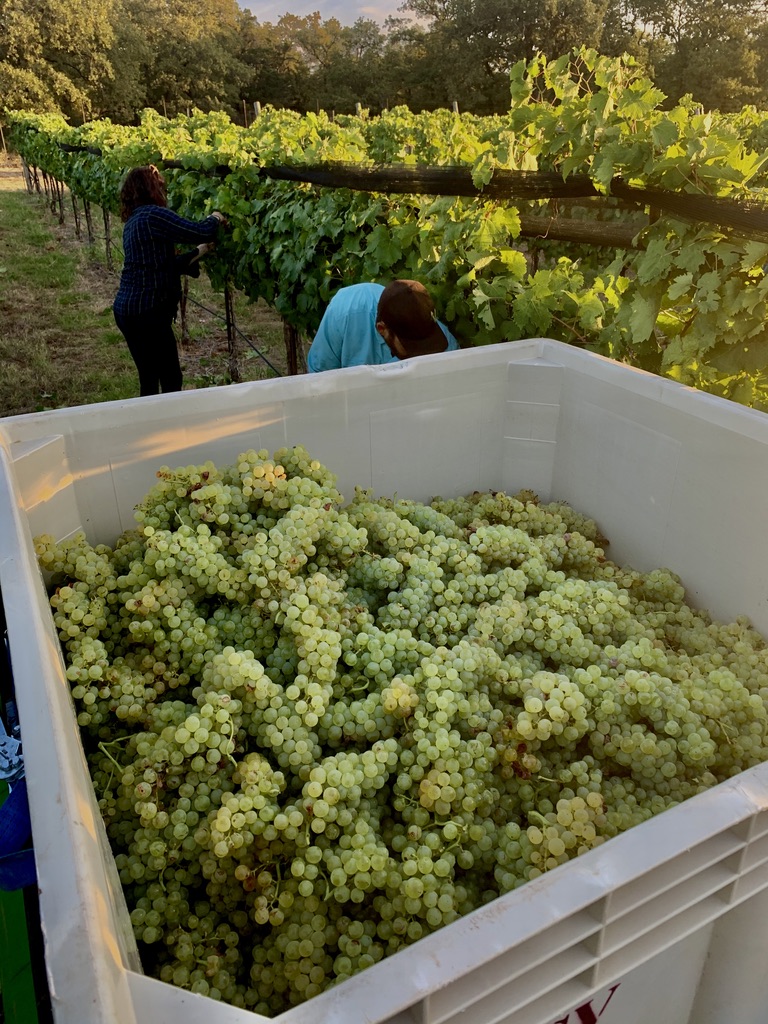
Auler’s winemaker, Sergio Cuadra, believes when this study is published, it will lend validation to Texas wines, putting the spotlight on Texas techniques, particularly since the wine world is intensely concerned about global warming.
“I think it would be very interesting for the tables to flip,” Auler says. “We’ve always gone to France and the Old World and then to California and the New World for winemaking techniques. It would be fabulous to have this research validating the wines that we’re making in Texas and to offer the findings internationally for the wine world to better understand the effects of heat on vines.
“We haven’t done a good enough job of telling the story that the Vitis vinifera grapes grown the world over, were born in the Middle East thousands of years ago in a climate even hotter than here, and therefore, these grapes also grow well in the heat of Texas.”
CURRENT CONDITIONS
Today, Texas is the fifth-largest wine-producing state in the country, following California, New York, Washington, and Oregon.
According to The National Association of American Wineries, in an economic impact study released this September, the Texas wine industry has a $20.35 billion economic impact, employing more than 141,000 people, generating almost $7 billion in annual wages, and contributing almost $390 million annually to state and local taxes.
Now, compare Texas’ $20.35 billion to California’s $88 billion economic impact. California has 4,795 wine producers. Texas has 443, according to the study. Winemakers readily point out that Texas is not only larger than California in total acres, but also larger than the mega-wine-producer, France, which currently grows grapes on two million acres, compared to Texas’ 9,300.
What do winemakers see there? Potential. Heaping acres of it.
SO, WHAT’S NEXT?
Industry leaders are working together to win federal designation of a new sub-AVA in the Texas Hill Country called the Llano Uplift. The uplift is an ancient geological area about 90 miles in diameter that features large granite domes and outcroppings.

Growing grapes in this significantly different kind of soil, DeBerry says, makes a different outcome in the fruit.
“What distinguishes the Llano Uplift is primarily the soil, the decomposed granite. Outside of that, it shifts more to a limestone and caliche, so it changes. The pH of the soil is slightly different, a little more acidic in the granite and sandstone. That acid has an impact on grapes,” DeBerry says.
Brundrett and Auler both believe we have not yet discovered all the growing regions around the state that are unique and special, but they look forward to the discoveries because each designation will define additional characteristics for the grapes grown there.
Those terroirs—the cola taste from the Llano Uplift, the herbal note from the High Plains, the violets in the Pedernales River Basin—are what distinguish Texas wines from those made anywhere else in the world. And that’s what gets winemakers excited about their craft.
Brundrett calls it “letting the vineyard speak.”
“When you buy a bottle of our delicious wine,” he says, “You can not only create an amazing experience for your family and your friends, but it means something for the people in the Texas wine industry who are growing these grapes, who are working for these vineyards. We are telling their story.”
It’s a story still being written, and one every Texas winemaker wants to improve. Yates says everyone involved is spending 150 percent of their time to increase the quality of the wines they’re making. “We’re winning best red wines. We’re winning best white wines. We’re competing on the same level [as California]. We’re just not as old as they are. Give us a little bit more time, and we’ll win everything.”
Back at Fall Creek Vineyards, a.k.a. permit number three, Susan Auler echoes that sentiment. “We’re always looking for any way we can squeeze out that last little ounce of quality. Not everybody’s on the same level. That’s our challenge, to get everybody on the same level, because a less than good quality bottle of Texas wine is not good for anybody in the industry.”


